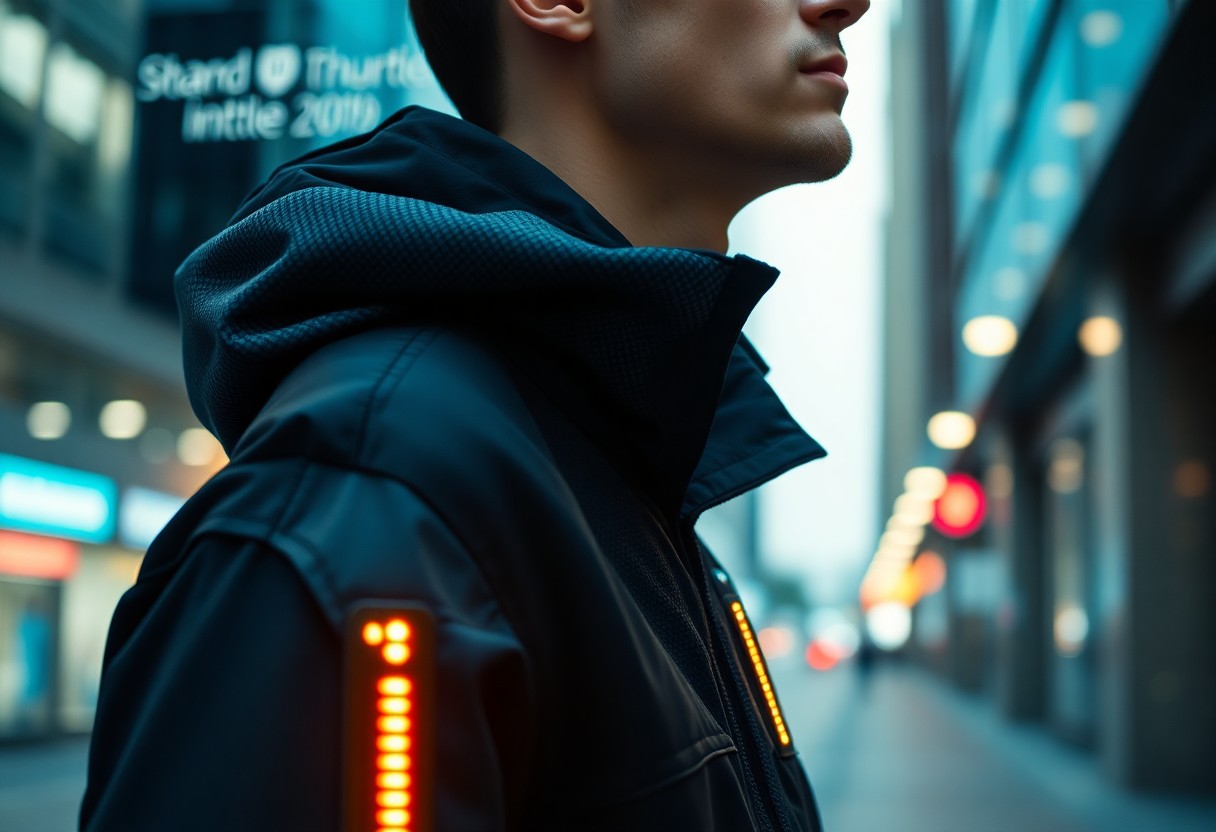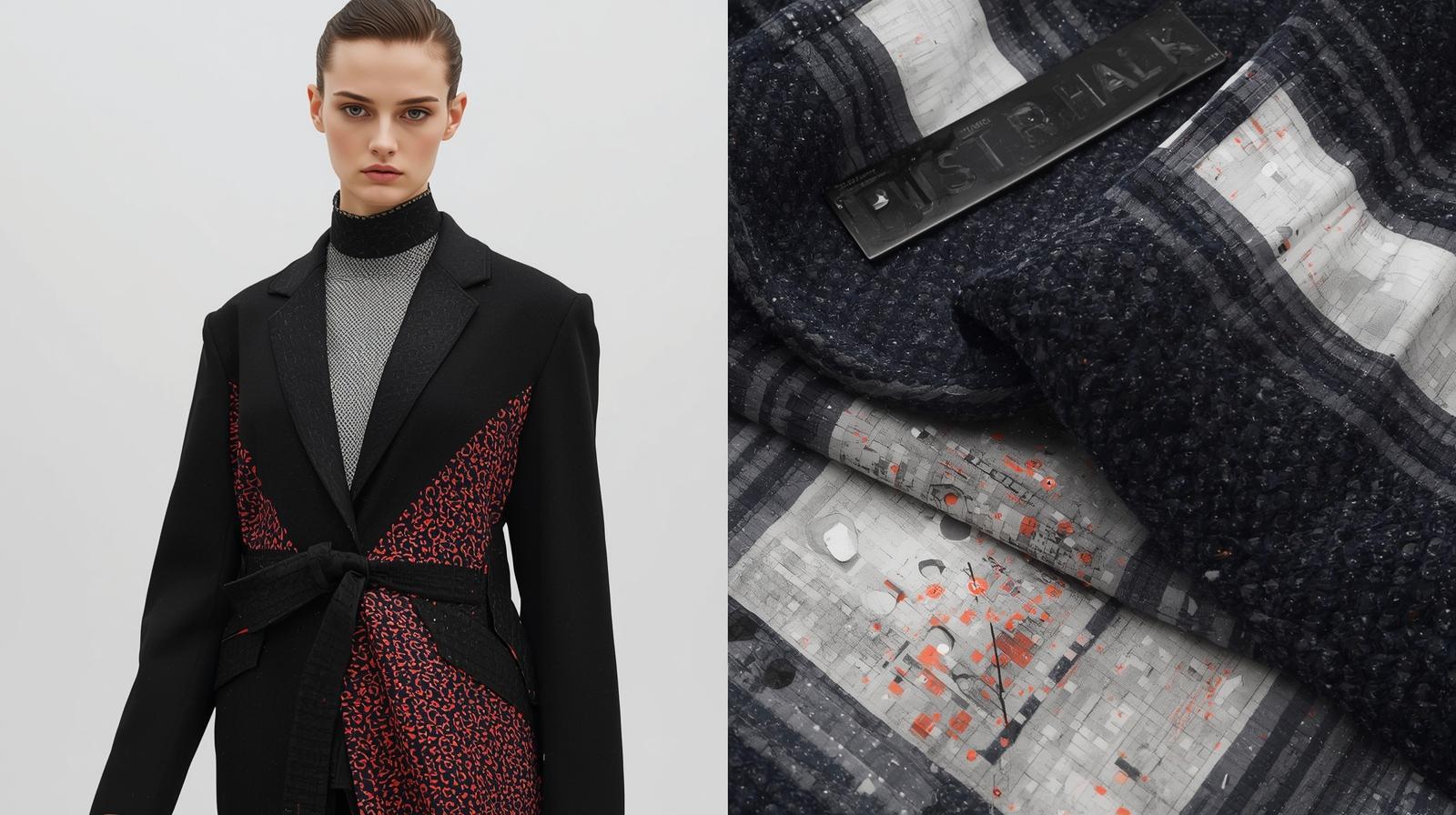7th Oct 2025
Title - Tech-Infused Fabrics - Smart Textiles in Everyday Wear

Over the last few years, tech-infused fabrics have revolutionized how you think about your clothing. These smart textiles combine advanced technology with everyday wear, offering benefits such as moisture-wicking, temperature control, and even health monitoring. You can now enjoy garments that not only look stylish but also enhance your comfort and performance, making your daily life more efficient. Discover how these innovations can transform your wardrobe into a space where technology and fashion seamlessly intersect.
Understanding Smart Textiles
Definition and Overview
Smart textiles, also known as smart fabrics, integrate technology with traditional textile materials to enhance functionality. These innovative materials provide comfort and offer capabilities such as moisture management, temperature regulation, or even integrated electronic components. They have expanded the possibilities for apparel, enabling features like health monitoring and environmental interaction.
Types of Smart Fabrics
Smart textiles can be classified into three main categories: active, passive, and interactive. Active fabrics respond to environmental stimuli, such as temperature and moisture. Passive fabrics, on the other hand, have built-in features that enhance performance without requiring external input. Interactive fabrics are capable of engaging with users through electronic interfaces, allowing you to control devices or track fitness levels seamlessly.
| Type | Description |
|---|---|
| Active Fabrics | Respond to environmental changes like temperature or moisture. |
| Passive Fabrics | Incorporate intrinsic features to enhance comfort and utility. |
| Interactive Fabrics | Enable communication with electronic devices for user interaction. |
| Sensors | Incorporate wearable technology to monitor health and performance. |
| Conductive Fabrics | Utilize conductive threads to enable electronic functionality. |
Each type of smart fabric contributes uniquely to your wardrobe, with active fabrics providing adaptability to your conditions, while passive fabrics enhance comfort through embedded features. Interactive fabrics offer a seamless interface between clothing and technology, allowing you to control various functions directly from your garments. Recognizing the diverse applications of these materials is vital for understanding their impact on your everyday wear.
- Active fabrics adapt to changing conditions.
- Passive fabrics ensure comfort through intrinsic features.
- Interactive fabrics facilitate user engagement.
- Sensors in fabrics enable health monitoring.
- Conductive fabrics allow for electronic functionality.
Engaging with different smart fabric types enhances your experience and opens possibilities for multifunctional clothing. Active fabrics might assist in performance sports gear, while interactive elements could transform casual wear into smart clothing that tracks health metrics. Recognizing these features allows you to make informed choices that suit your lifestyle and needs.
| Type | Description |
|---|---|
| Wearable Technology | Devices integrated into fabrics for health and fitness tracking. |
| Temperature-Regulating Fabrics | Fabrics that adapt to maintain optimal body temperature. |
| Moisture-Wicking Fabrics | Draw moisture away from the skin for comfort. |
| Lightweight and Breathable Fabrics | Increase comfort during various physical activities. |
| Eco-friendly Smart Fabrics | These fabrics are made from sustainable materials to reduce environmental impact. |
- Wearable technology integrates with everyday clothing.
- Temperature-regulating fabrics keep you comfortable.
- Moisture-wicking fabrics enhance performance in sports.
- Lightweight fabrics increase wearability.
- Eco-friendly options support sustainability.

Applications of Tech-Infused Fabrics
Tech-infused fabrics have a multitude of applications across various sectors, enhancing daily life through innovative solutions. From healthcare to fashion, these smart textiles are transforming how you interact with your environment and monitor your health. They actively support physical performance, improve comfort, and offer unique functionalities, making them a valuable addition to your wardrobe.
Wearable Technology
Wearable technology integrates seamlessly with tech-infused fabrics, allowing you to track vital signs and physical activities. Smartwatches and fitness trackers embedded in your clothing monitor your heart rate, temperature, and even hydration levels, empowering you to take charge of your wellness. Brands like Under Armour and Nike are revolutionizing how you experience fitness by embedding sensors directly into garments.
Performance and Sportswear
In performance and sportswear, tech-infused fabrics boost athletic performance significantly. Fabrics like Nike’s Tailwind or Adidas' ClimaCool focus on moisture-wicking and temperature regulation, keeping you comfortable during intense training sessions. These innovations can enhance your endurance and support recovery, proving to be necessary allies for serious athletes.
For instance, studies indicate that wearing garments made from smart textiles can improve recovery times by 30% due to their compression features, which promote blood circulation. You can also find fabrics that monitor your body metrics in real-time, allowing you to adjust your training intensity accordingly. With features like UV protection and antibacterial properties, these advanced sportswear options support your physical activity and help maintain your skin health, allowing you to push your limits while staying protected.
Benefits of Smart Textiles
Smart textiles offer a range of benefits that significantly enhance your daily life. These fabrics not only improve your comfort through tailored fit and temperature regulation but also integrate functionalities that support your lifestyle. Whether you're exercising, working, or relaxing, tech-infused fabrics can adapt to your needs, making them ideal for diverse applications.
Enhanced Comfort and Functionality
With features like moisture-wicking properties and temperature control, smart textiles ensure that you feel comfortable regardless of your activity level. Many fabrics incorporate stretchability and breathability, allowing for a better range of motion and overall wearability, transforming your clothing into a second skin that adjusts to your body's needs.
Health Monitoring and Safety
Smart textiles play a pivotal role in health monitoring and safety, acting as a wearable health device without the bulk. Your clothing can track vital signs such as heart rate, temperature, and even motion, providing real-time data that can alert you to potential health issues. This technology enhances personal safety, especially for those engaging in sports or vulnerable individuals needing continuous monitoring.
For instance, garments equipped with biosensors can analyze sweat composition to detect dehydration or fatigue, giving you timely insights to modify your performance. Additionally, features like built-in RFID tags can enhance safety by allowing your clothing to alert specific contacts if you're in distress. With smart textiles, your everyday wear evolves into a proactive health and safety partner that provides crucial information and peace of mind.
Challenges and Limitations
Despite their innovative nature, tech-infused fabrics face several challenges that hinder widespread adoption. Issues such as integration with traditional manufacturing processes, compatibility with existing clothing care practices, and consumer skepticism about their functionality can limit their market growth. Moreover, they must navigate regulatory standards and maintain privacy concerns for smart textiles incorporating personal data tracking.
Durability and Maintenance
Durability of tech-infused fabrics often raises concerns, as the embedded technologies can be sensitive to wear and tear. Regular washing and exposure to environmental factors can diminish their functionality over time. Maintenance requirements may differ significantly from conventional fabrics, necessitating specific care instructions to ensure longevity and performance.
Cost and Accessibility
The price point of tech-infused fabrics can be a significant barrier to entry for many consumers. Advanced technology and materials often result in higher production costs, which the buyer ultimately bears. Consequently, accessibility becomes an issue, especially for budget-conscious shoppers, limiting these innovative textiles to niche markets.
For instance, while some high-end brands offer smart textiles at prices exceeding $300, mass-market alternatives are rare, resulting in a market gap. Even as production methods improve, bringing costs down, the current expense can alienate potential consumers who might benefit from the technology. Increasing public awareness and interest could drive prices lower through economies of scale, but for now, the high cost remains a notable hindrance to the adoption of tech-infused fabrics in everyday wear.
Future Trends in Smart Fabrics
The landscape of smart textiles is evolving rapidly, with advancements promising to redefine how you interact with your clothing. Emerging technologies aim to integrate health-monitoring sensors, energy-harvesting capabilities, and adaptive materials that respond to environmental changes. You can expect to see fabrics that change colour based on your mood and adjust their temperature according to the weather, making your wardrobe smarter and more intuitive than ever.
Innovations on the Horizon
Innovative techniques such as nanotechnology and machine learning are paving the way for the next generation of smart fabrics. You might soon wear clothing that can detect vital signs, streamlining personal health management directly from your outfit. Additionally, advancements in fiber-based electronics will enhance durability and functionality, allowing your clothes to serve multiple purposes throughout the day.
Sustainability and Eco-friendly Practices
Sustainability is becoming a cornerstone of smart fabric innovation. You can look forward to textiles made from recycled materials and incorporating biodegradable fibres, reducing the environmental impact. Brands are increasingly prioritizing eco-friendly practices to meet consumer demand for responsible production. The industry is undergoing a transformation, fostering a circular economy that prioritizes the reuse of materials over their disposal.
The integration of sustainability in smart textiles involves a multi-faceted approach. Companies are exploring options like organic cotton blended with conductive threads, ensuring minimal environmental impact while maintaining functionality. Emerging innovations in dyeing processes use less water and non-toxic chemicals, aligning with the need for eco-friendly practices. As production methods evolve, you can expect a surge in items that balance performance and planet-friendly choices, all while enhancing your daily wardrobe with technology.
Real-World Examples
Exploring real-world examples of tech-infused fabrics reveals their dynamic presence in the fashion and athletic industries. Your wardrobe can incorporate these innovative textiles not only for comfort but also for enhanced performance and health monitoring.
Leading Brands in Smart Textiles
Brands like Nike and Adidas are at the forefront of smart textiles, offering garments that integrate data-tracking sensors and temperature-regulating materials. These advancements represent a shift in consumer expectations as you consider both style and functionality.
Case Studies and Market Impact
The emergence of tech-infused fabrics has led to significant market changes. 95% of consumers show interest in wearable technology, emphasizing the demand for garments that combine practicality with style. With revenues in the smart textiles market reaching $4.6 billion in 2022, the trend is clearly gaining momentum.
- Wearable Technology: In 2022, the global wearable market grew by 35%, driven by smart textiles.
- Health Monitoring: Companies like Hexoskin report a 70% increase in user adoption for their smart shirts that track biometric data.
- Temperature Regulation: The demand for thermo-responsive fabrics has surged, with a projected market growth of 25% annually.
- Sporting Goods: Adidas' 'Futurecraft' shoes utilize 3D printing technology, illustrating the merging of fabric technology and footwear.
- Fashion Integration: Major fashion brands are investing over $100 million in R&D for integrating tech into everyday clothing.
You'll observe that these case studies highlight the growing significance of tech-infused fabrics across various markets. With the rise of consumer interest, brands that invest in innovative solutions stand to capture your attention and revolutionize the apparel industry. As smart textiles evolve, the potential for enhanced user experience and personalization grows, making the future of fashion more intertwined with technology.

- Smart Shirts: Hexoskin's shirts measure heart rate and breathing, showcasing a 40% increase in sports performance.
- Connected Wearables: Fitbit’s smart clothing line has contributed to a 50% increase in fitness tracking device usage.
- Adaptive Suiting: Technology-enhanced suits created by Wearable X have gained traction among professionals, with a resonance reaching 80% among users.
- Fabric Development: The textile division of Boeing reports a 60% reduction in weight for smart fabrics used in aviation.
- Material Innovation: Research indicates that self-cleaning fabrics could reduce laundry times by 30% for consumers.
To wrap up
Now that you understand the potential of tech-infused fabrics, you can appreciate how smart textiles can enhance your everyday wear. With functionalities that range from temperature regulation to health monitoring, these innovations not only elevate comfort but also add significant value to your lifestyle. As you explore your clothing options, consider how integrating these advanced materials can optimize your daily activities and personal well-being, making your wardrobe not just a collection of garments but an extension of your tech-savvy self.

